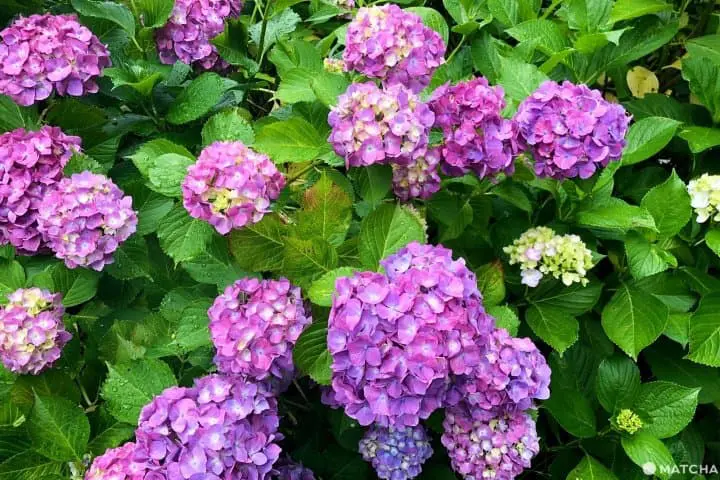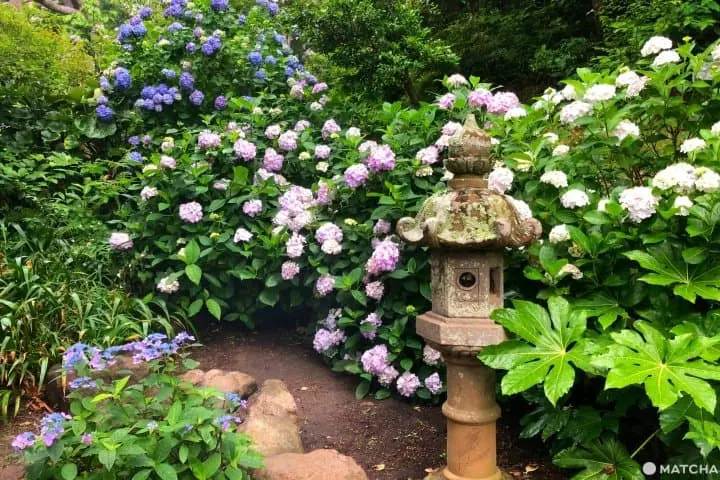Hydrangeas And The Rainy Season - Japan's Flower Of Early Summer

The rainy season might make you picture dark, dull days full of muggy weather, but hydrangea bloom during this season, coloring the streets of Japan in vivid shades of pinks, purples, and blues. Learn more about these beautiful, bright flowers that will uplift your spirits.
Hydrangeas - The Early Summer Flowers of Japan

Although rainy season can be full of muggy days and damp nights, there is one bright spot to this potential month of rain: "ajisai", or hydrangeas, in bloom. These vividly colored, round clusters of flowers dot the streets and alleyways of Japan and are the perfect cure for rainy day blues in June.
Hydrangeas are the best things to see if you start feeling down because of the rain. Read below to discover more about this beautiful flower.
Hydrangeas Are Poisonous?!

"Every rose has its thorn" also applies to the hydrangea. These beautiful flowers are mildly toxic to humans and animals; their leaves especially contain cyanogenic glycosides (related to the poison, cyanide), and if absorbed by the body, will cause nausea, vomiting, or dizziness after about half an hour of ingestion.
You would need to ingest a lot in order for these effects to become serious, but no one wants to spend their time being ill, so please keep an eye on your children and pets if you go to view these flowers.
While there are plenty of edible flowers in Japan, this definitely isn't one of them!
The Various Shades of Hydrangeas

In most countries, hydrangeas are typically white flowers, or some have a slight green tint to their petals, but many first time visitors to Japan are surprised at the variety of colors they come in. While this depends on what species of hydrangea is being viewed, the color of hydrangea is largely affected by the number of aluminum ions in the soil: acidic soils will produce blue to purple flowers, while alkaline soils will produce pinks and reds.
Types of Hydrangeas

There are over 50 different species of hydrangea found in the world, with seven types commonly cultivated in Japan. Within the category of hydrangeas however, there are two large divisions that these flowers fall into. There are ornamental types, which do not breed, and others that have bisexual flowers, which do breed. Breeding hydrangeas are recognized by the small dense clusters that grow in the center of the large "flower" part - the colorful petals are just ornamental.
If you are in Japan in June, make sure to keep an eye out for wild and cultivated hydrangea. They are often planted on temple and shrine grounds, but also can be seen a walk around Tokyo and cities throughout the country--they are commonly found surrounding buildings, inside parks, and along sidewalks. You're sure to find some that come in colors you might not have imagined possible!
Read also
Main image by Pixta
93年生まれのWEB編集者・ディレクター。ヨソモノだから気付く地域の良さを発掘したい。鳥肌を信じて”いいとこ”探し中。




































![[2026] Top 5 Strawberry Picking Spots in Tokushima, Naruto| Farms and Access Guide for January to May](https://resources.matcha-jp.com/resize/720x2000/2025/03/06-227165.webp)

